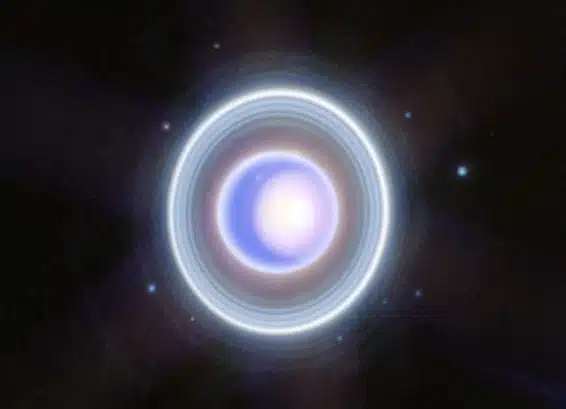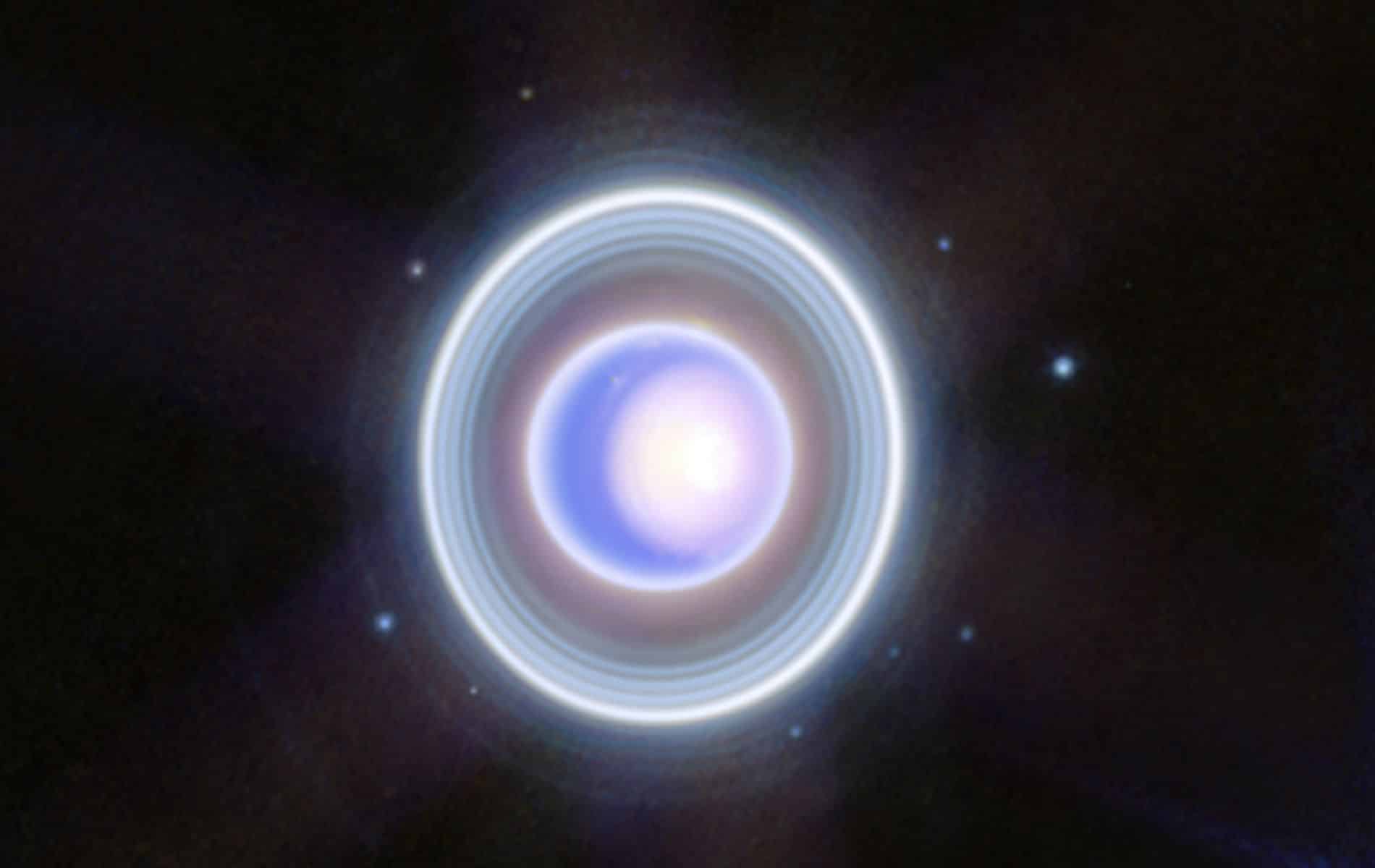The new images show a dynamic world full of rings, moons, storms and other fascinating atmospheric features.
When the Voyager 2 spacecraft flew by Uranus in 1986, the planet appeared at first glance to be a solid, almost smooth, blue ball. But this old perception of Uranus has been completely refuted by new and impressive images taken by the James Webb Space Telescope. Instead of a dull, smooth appearance, Uranus now reveals itself as an extraordinary ice giant in exquisite detail. This proves that this distant planet is actually more dynamic and interesting than previously thought.
More about Uranus
Uranus, the seventh planet in our solar system, stands out as an unusual specimen. Unlike all the other planets in our solar system, Uranus rotates almost perfectly on its side, similar to a pig rotating on a spit. This unique trend results in extreme seasons, where the planet’s poles are exposed to continuous sunlight for many years at a time, followed by an equal number of years of complete darkness. The seasons on Uranus are very slow, because it takes Uranus 84 years to complete one orbit around the Sun. Due to the chemical composition of its interior, the planet is classified as an ice giant. Most of its mass is thought to consist of “icy” materials such as water, methane and ammonia, surrounding a small rocky core.
Recently, NASA’s James Webb Telescope set its eyes on Uranus, an unusual and mysterious ice giant located in the outer reaches of our solar system. This telescope is very powerful at detecting infrared light. Thanks to Webb’s unprecedented infrared resolution, we now have a stunningly clear picture of this still mysterious planet.
the pictures
You can admire the photos below. The images show rings, moons, storms and other atmospheric features, including the seasonal polar ice cap.

Rings
First of all, Uranus’s wonderful rings stand out. Thanks to Webb’s extraordinary sensitivity, we were even able to capture Uranus’ faint inner and outer rings in detail. Most interesting is undoubtedly the elusive Zeta ring, the very faint and hazy ring closest to the planet.
Mane
In addition, Webb also captured many of the planet’s 27 known moons, and even some small moons inside the rings (click to enlarge).

Storms
Many bright storms can be seen in the vicinity and below the southern border of Uranus’s polar cap. The frequency and location of these storms in Uranus’ atmosphere appear to be influenced by seasonal and meteorological factors.
Polar hat
Another notable feature is the planet’s seasonal arctic cap. In recent images of Uranus, certain details of the seasonal north polar cap are now more clearly visible compared to previous Webb images taken earlier this year. These include the bright white inner cap and the dark band at the bottom of the polar cap, towards lower latitudes.
Because Uranus rotates on its side at an inclination of about 98 degrees, it experiences the most extreme seasons in our solar system. For approximately a quarter of each Uranian year, one pole receives continuous sunlight, while the other half of the planet is plunged into a long, 21-year dark winter.
Because Uranus is turned on its side (see box), the polar cap appears more prominent when the pole points toward the sun and receives more sunlight. This stage is known as inversion. Uranus reaches its next solstice in 2028, and astronomers are eagerly awaiting potential changes in the structure of these features. Therefore, Webb will play an important role in revealing the effects of seasonal and atmospheric factors on Uranus storms. This is of great importance because it will help astronomers understand exactly how the planet’s complex atmosphere works.
Overall, the new images provide valuable new insights into the still mysterious Uranus. These detailed observations, especially of the nearby Zeta ring, will be of great value in preparing and planning future missions to Uranus. But not only that. Studying this ice giant could provide astronomers with insight into the formation and atmospheric phenomena of similar sized planets in other solar systems. This knowledge can, in turn, deepen our understanding of our solar system as a whole by placing it in a broader cosmic perspective.

“Lifelong zombie fanatic. Hardcore web practitioner. Thinker. Music expert. Unapologetic pop culture scholar.”








